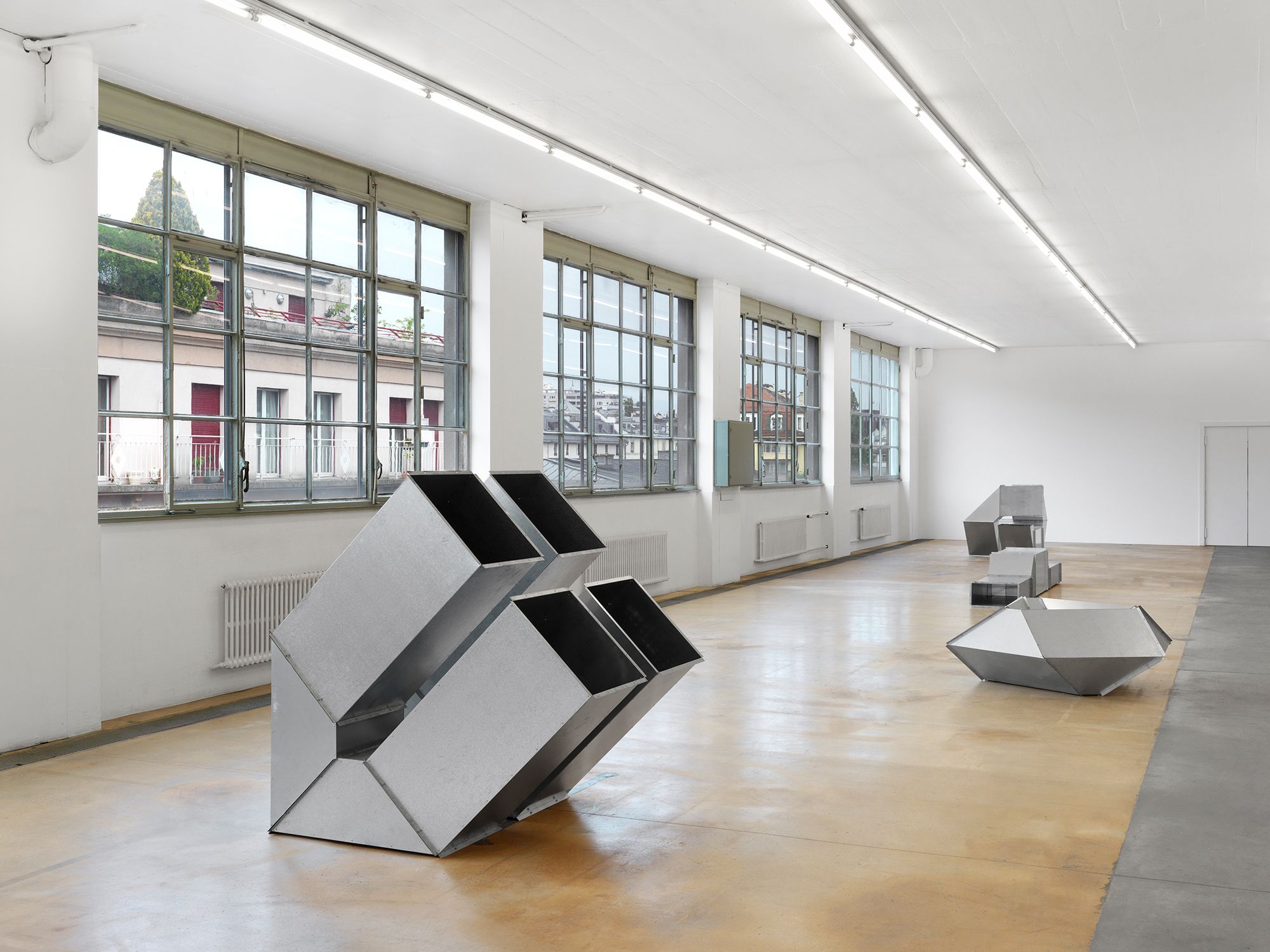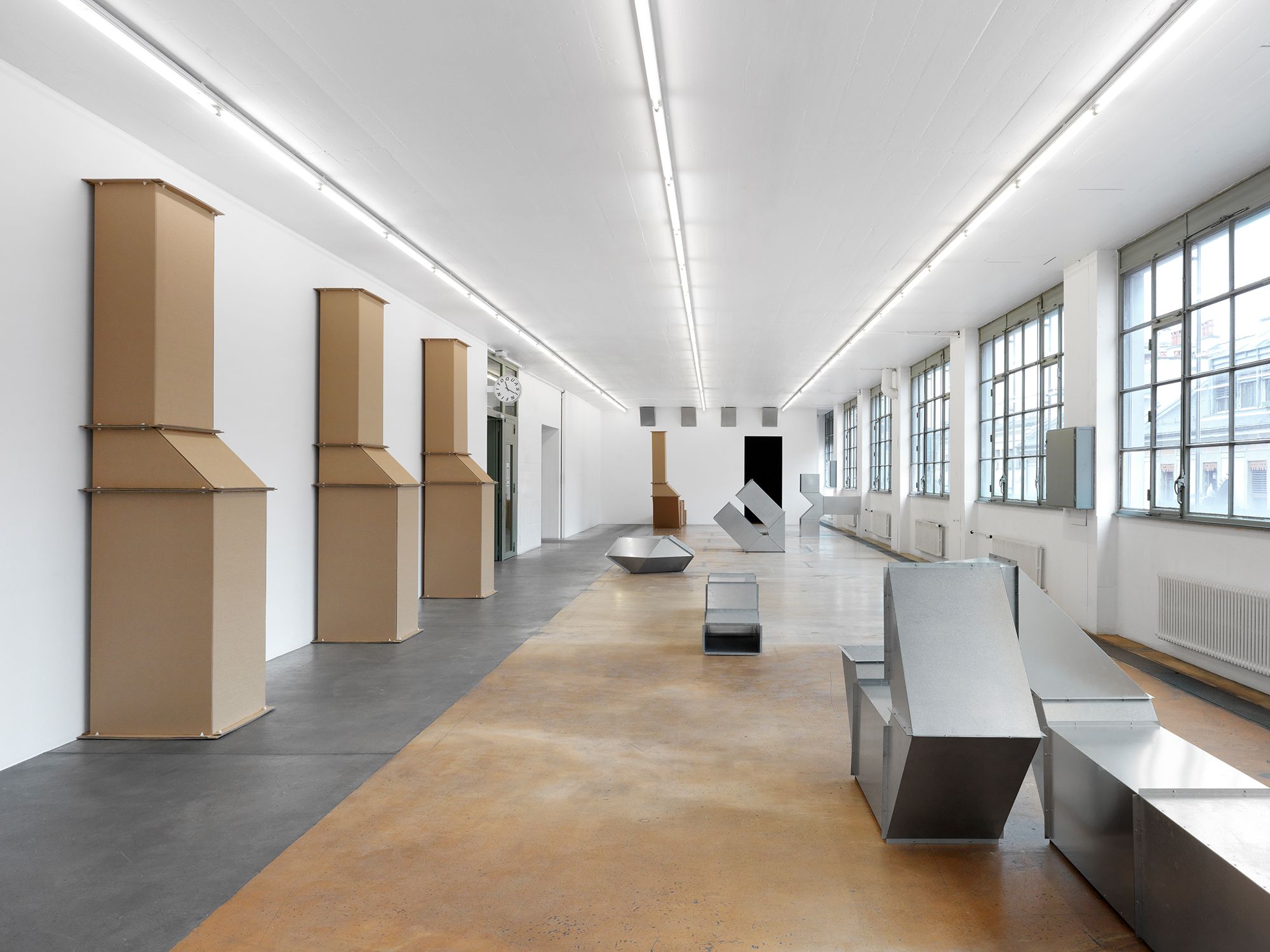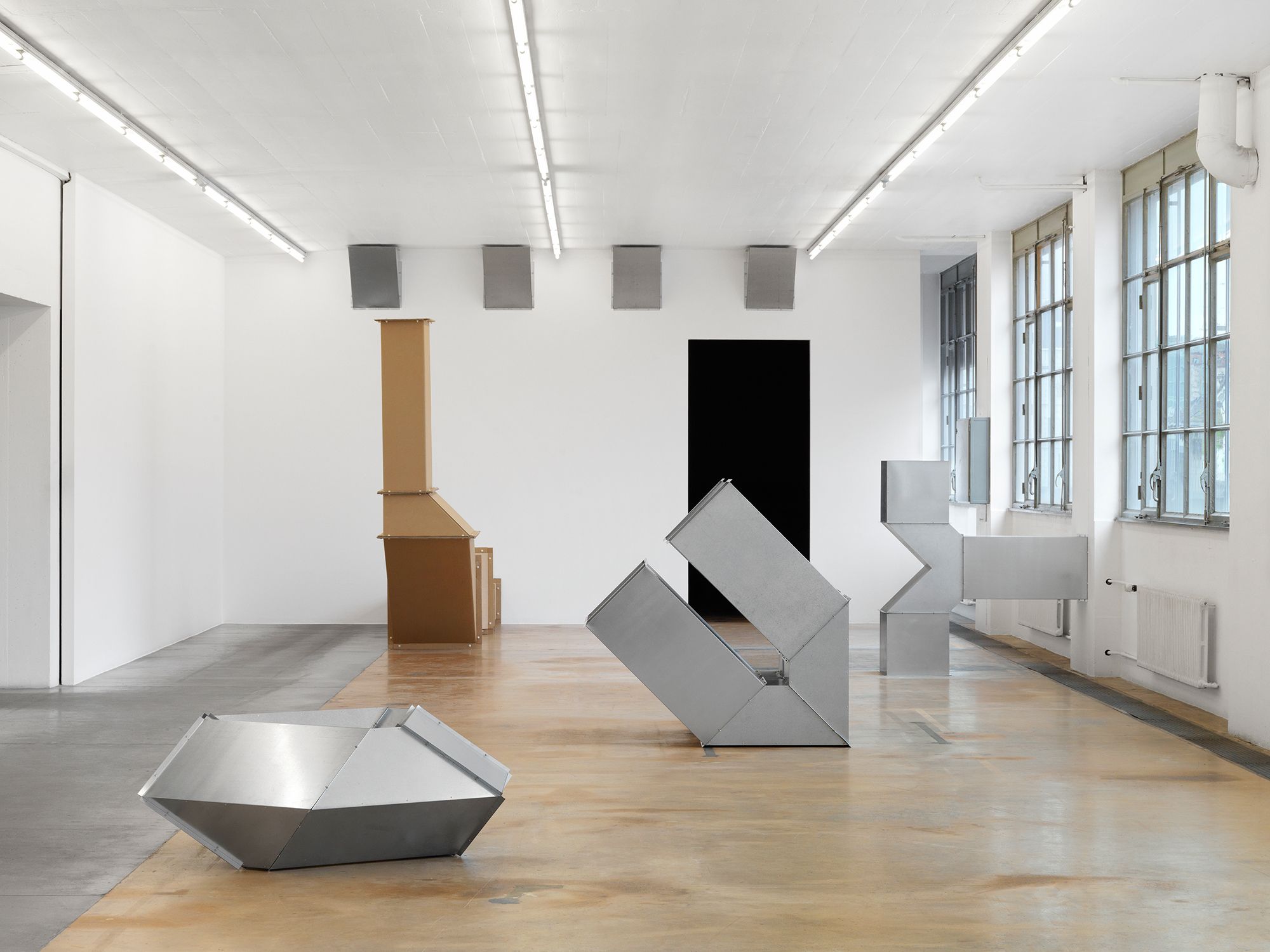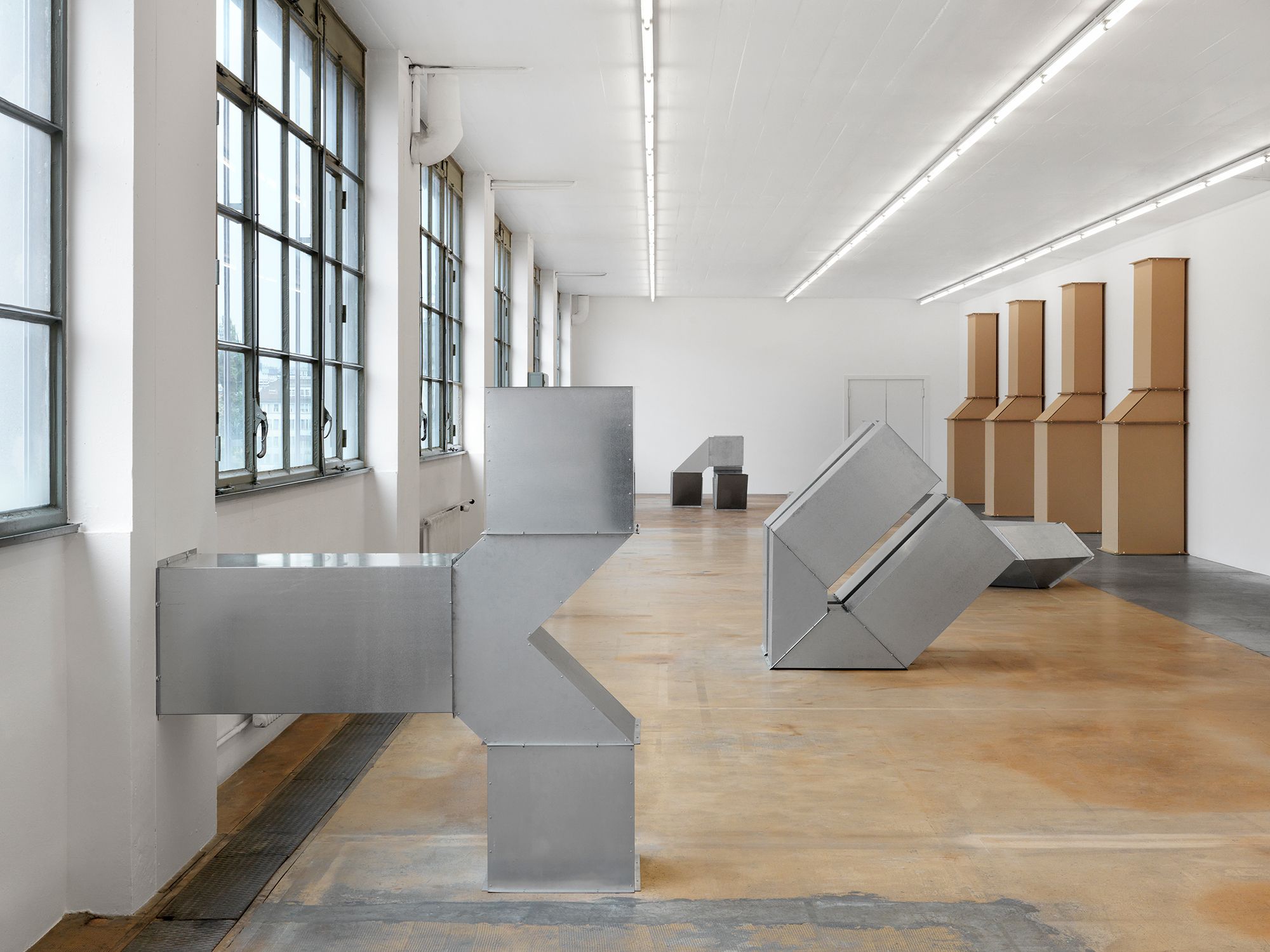Charlotte Posenenske (1930–1985) worked as an artist for a mere ten years, between 1959 and 1968. During that time, she developed a radical body of work, exploring transitions from the pictorial surface to space (Plastische Bilder, 1966), from sculpture to performance (Vierkantohre Serie D and DW, 1967), and from sculpture to architecture (Drehflügel, 1967–1968). Posenenske was one of the few Europeans who adopted the principles of American Minimalism―seriality, delegation of production...―but her work stands apart from that movement nonetheless through its avowed social and participative dimension. Echoing the political demands that rocked the 1960s, it was this commitment that would lead her to abandon art for sociology.
Posenenske studied at the State Academy of Fine Arts in Stuttgart, attending the classes of the painter Willi Baumeister, who introduced her to Mondrian’s Neo-Plasticism and the socio-revolutionary principles of Soviet Constructivism. From 1951 until 1955, she worked as a theater set designer, developing a concept of art as collective fulfillment. This notion of cooperation was fundamental to her Reliefs Serie B (1967), where the assembly of the modules conceived by the artist was left to those who installed them.
The Vierkantohre (“Square Tubes”) Serie D and DW (1967), presented here, represent a further radicalization. The modules, made from cardboard and galvanized steel, are produced in a factory. Their geometric shapes are the logical conclusion of standardization. Exhibited for the first time in Frankfurt in 1967 by Paul Maenz and Peter Roehr, these modules were continually rearranged during the vernissage. From production in the factory to the layout, the artist was determined that everyone concerned with the exhibition should be directly involved in it, thereby making explicit a performative dimension inherent in Minimalist sculpture.
Posenenske took this sharing of the work a step further by migrating from art’s traditional habitats to reach a wider audience. The locations where the D and DW series appeared included an airport, a railway station, a bank, a market, a factory and a street. By doing so, the context in which the work appears becomes a fundamental fact about it, as with works by artists such as Daniel Buren and Lawrence Weiner. Posenenske differs from them, however, in that her series induce a mimetic relationship with their environment: the artist’s formal vocabulary is on an equal footing with that developed on the production line for the ventilation ducts and other pipes and tubing. Their auratic value is accordingly diminished.
It is significant that this body of work should have emerged in Frankfurt in the 1960s. The city was beset during that decade by profound challenges to the established social order: the Auschwitz trials, student demonstrations for German reunification and against the Vietnam War... All of these events would be analyzed by the philosophers of the Frankfurt School. Posenenske, who was close to these thinkers, concluded, in a manifesto she published in May 1968: “It is painful for me to admit that art is unable to contribute to the resolution of urgent social problems.”
After her death, her husband allowed the D and DW series to continue to be produced and reactivated, up until his own disappearance. Thereafter, no further modules ever left the factory.
- Exhibition organized by Paul Bernard and Lionel Bovier
- With the support of the Mehdi Chouakri Galerie, Berlin, and the Estate of the artist



